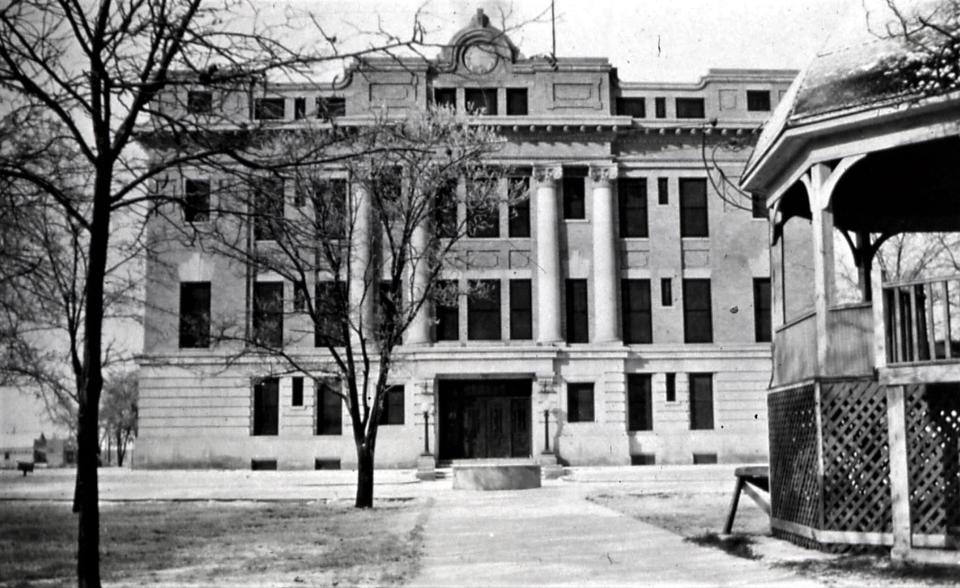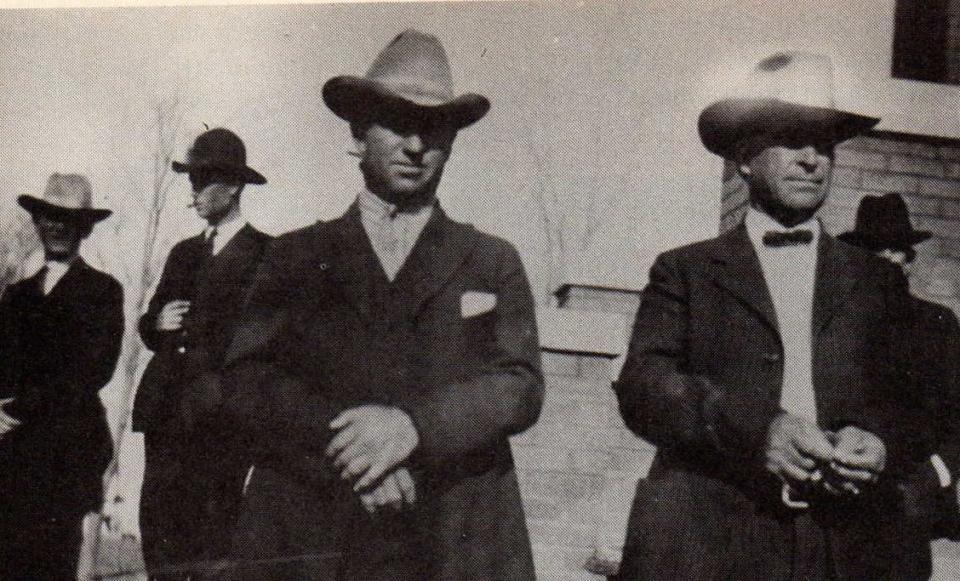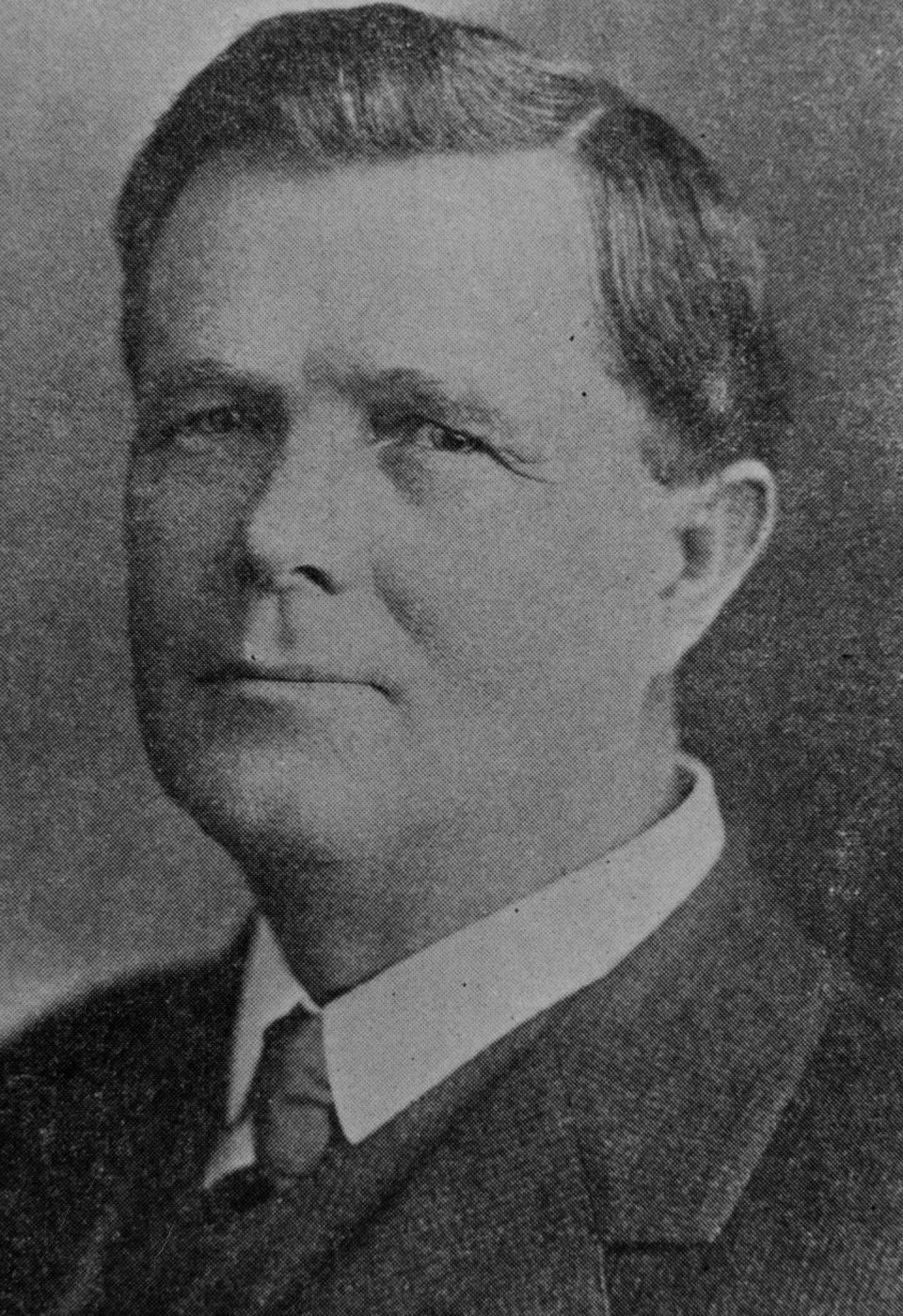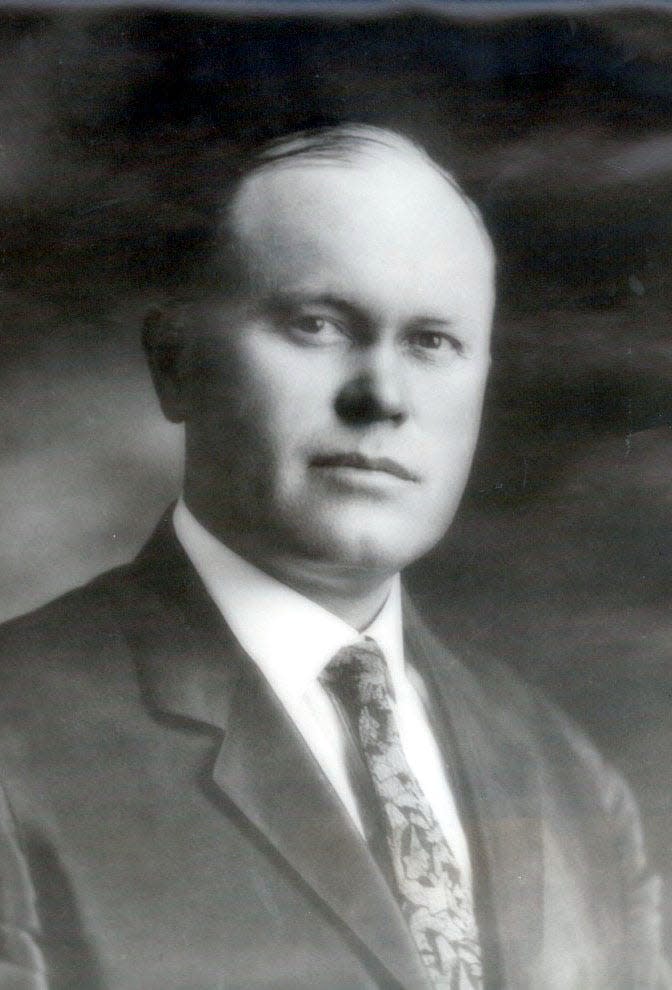Caprock Chronicles: Murders at the Gaines Hotel Part Three: The end of the Texas Frontier Era
Editor's Note: Caprock Chronicles is edited by Texas Tech University Librarian Emeritus, Jack Becker. He can be reached at jack.becker@ttu.edu. Today’s article about the murders of two cattle inspectors is the final of a three-part series by frequent contributor Chuck Lanehart, Lubbock attorney and award-winning Western history writer. In Part One, the life of legendary Texas lawman Dave Allison was examined. In Part Two, the murder of Allison and fellow cattle inspector Hod Roberson at the Gaines Hotel were chronicled.
Lubbock’s stately 1916 courthouse was the setting for one of Texas’ most anticipated trials of the 20th Century: the 1923 murder trials of Tom Ross and Milt Good for the slayings of legendary lawman Dave Allison and his partner, Hod Roberson. Ross would be tried first for killing Roberson, to be followed by Good’s trial for the same killing.

Judge Clark Mullican’s first order of business was security. He instructed 38 deputies to guard courthouse posts, drew diagrams of the environs and ordered all spectators but newspapermen to be searched for firearms. Even the Judge’s wife was searched!
On June 18, 1923, every seat in the courtroom was occupied long before the trial began, with a huge overflow crowd extending down the stairs. Ross entered in a business suit and boots. He kissed his wife and 15-year-old daughter.
Prosecutors included District Attorney Gordon McGuire of Lamesa, District Attorney J.E. Vickers of Lubbock and flamboyant Dayton Moses of the Cattle Raisers Association. Powerful Lubbock lawyer William Bledsoe, who a decade earlier bested Vickers in Lubbock County’s first murder trial, sat at the counsel table with fellow defense lawyers.

Four hundred veniremen were questioned about membership in the Ku Klux Klan, among other subjects. Twelve were chosen. The State called eight witnesses before resting its case on June 22. But 200 witnesses testified for both sides in rebuttal, including scores who recounted the good character of Allison and Roberson.
Ross, sitting with his wife and daughter, never flinched as he heard himself denounced in bitter terms by Moses. He was found guilty and sentenced to 35 years in prison.
Three days later, Milton Good’s trial for killing Roberson began and closely resembled Ross’ trial, with the same judge and advocates. Unbiased jurors were scarce. When selected, each juror was identified in newspaper accounts by name, age, town of residence, number of children, religion and occupation.

After the State rested its case, Good testified in his own defense, saying he acted in self-defense, though none of the many eyewitnesses to the killings saw the victims go for their guns.
Good, his wife and eight children, five sisters and brother sat with him while Moses delivered one of the “most scathing and forceful arguments ever heard in a Texas courtroom.” He was convicted and though the State sought the death penalty, the jury’s sentence was 26 years in prison.
The two trials consumed three weeks and cost the State $20,000, more than any ever held in West Texas. Some 250 witnesses from 60 Texas counties appeared. Deputies complained of sore backs after searching 40,000 spectators. Only one pistol was found, but many nail files were taken from ladies.

Next were the separate trials of Ross and Good for the murder of Allison, but the cases were sent to Abilene on a second change of venue, as no unbiased prospective jurors could be found in Lubbock following saturation newspaper coverage.
The Abilene trials lasted most of September 1923, with similar testimony. Again, the defendants claimed self-defense.
“The threats made me so worried that I could not eat or sleep!” Ross testified. “I knew from reports that Roberson had killed [many men] and I began to carry a six-shooter. I knew that he would kill me!”
When he and Good entered the hotel, Good exclaimed, “Look out for Allison!” Ross saw Roberson reach his right hand toward his left hip. “I began shooting. I don’t know how many times I shot. I quit when Roberson’s head fell back and he relaxed.”
Again, both were convicted. Again, the State pressed for the death penalty. Jurors refused, sentencing Ross to 20 years and Good to 25 years in prison.

Historians have described the convictions as the end of the frontier era of Texas history.
The sentences were “stacked,” so Ross faced a 55-year term and Good faced a 51-year term. The convicts arrived at Huntsville’s State Prison in January 1925, and after all appeals failed, they decided not to stay. In November, Ross and Good mugged a guard and escaped.
The two fugitives fled to New Mexico, then roamed the Northwest. Good was captured in Oklahoma and returned to Huntsville.
Ross—born Hillary Loftis—changed his identity again and appeared in Montana. Now known as Charles Gannon, in 1929 he gunned down a ranch foreman during an argument. Immediately after the killing, Loftis/Ross/Gannon put his .45 pistol in his right ear, pulled the trigger, and took his own life. He was 68 years old.
Soon after his return to Huntsville, Good tried to burrow his way out of prison, but failed. Gov. Ma Ferguson — infamous for granting freedom for a fee — pardoned Good in 1934. Five years later, he returned to Huntsville for a short theft stint. He returned to West Texas and in 1960, Good was killed in an accident at his ranch, age 71.
Archives of the Fort Worth Star-Telegram, Ancestry.com and the book “Fearless Dave Allison” by Bob Alexander, were sources for this article.
.
This article originally appeared on Lubbock Avalanche-Journal: Caprock Chronicles: Murders at the Gaines Hotel Part Three: The end of the Texas Frontier Era

